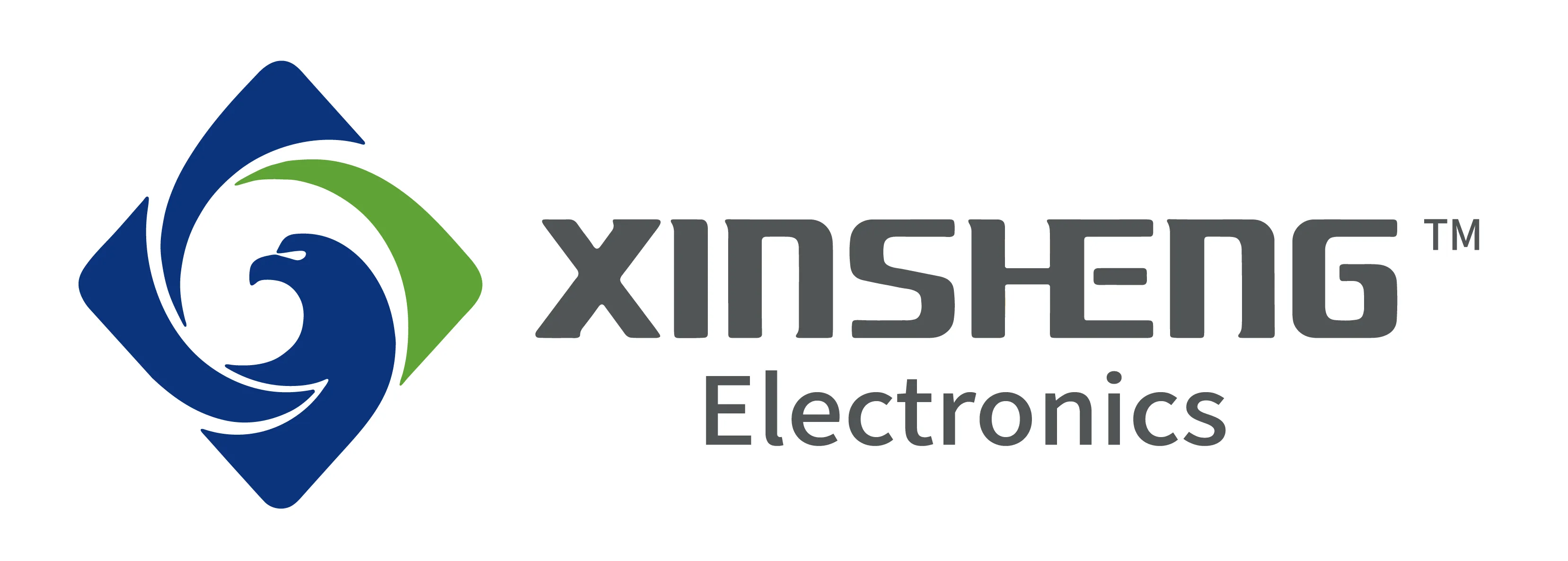SMA Connectors: The Most Common RF Connectors
Introduction
SMA connectors are one of the most widely used RF (radio frequency) connectors in the world. They are found in countless electronic systems, from wireless communication devices and antennas to testing equipment and aerospace systems. Their popularity is due to their compact size, reliable performance, and ability to operate at high frequencies.
In this blog, we will take a deep look into SMA connectors—what they are, how they work, their types, key applications, advantages, and future developments. Whether you’re a technician, engineer, or electronics enthusiast, understanding SMA connectors is essential for working with RF systems.
What Is an SMA Connector?
SMA stands for SubMiniature version A. It is a type of coaxial RF connector that features a threaded interface to provide a secure and stable connection. Designed in the 1960s, SMA connectors were originally developed for military applications but have since become standard in commercial RF systems.
SMA connectors typically support frequencies up to 18 GHz, with some precision versions reaching up to 26.5 GHz or higher. Their standard impedance is 50 ohms, which is suitable for most RF signal transmission applications.
Structure and Design
An SMA connector is made up of several key parts:
- Center Pin:This carries the RF signal.
- Dielectric Insulator:Separates the center pin from the outer shell.
- Outer Shell:Serves as the ground and shielding.
- Threaded Coupling Nut:Provides a secure mechanical connection.
The threaded mechanism ensures a solid connection that resists vibration and loosening, making SMA connectors suitable for both laboratory and field use.

Types of SMA Connectors
SMA connectors are available in various configurations to suit different applications. Here are some common types:
1. Standard SMA
This is the most common type used in general RF applications. It supports up to 18 GHz and comes in both male and female forms.
2. Reverse Polarity SMA (RP-SMA)
RP-SMA connectors have the same outer housing as standard SMA connectors but reverse the center pin and socket. These are often used in Wi-Fi routers and wireless antennas.
3. Precision SMA
Designed for high-frequency applications up to 26.5 GHz or more, these connectors offer tighter tolerances and improved performance.
4. Bulkhead SMA
These connectors are designed to be mounted through panels or enclosures, with an extended threaded section.
5. Right-Angle SMA
Used in tight spaces where a straight connector would not fit. These offer a 90-degree angle for easier routing.
6. SMA to Other Interface Adapters
SMA connectors are also used in adapter configurations, such as SMA-to-N-type, SMA-to-BNC, and SMA-to-SMB, for system compatibility.
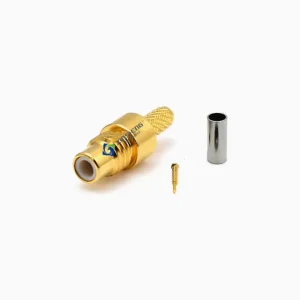
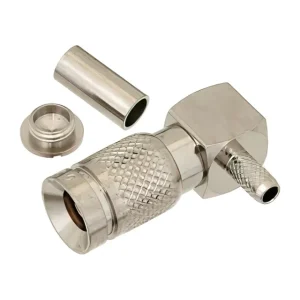
Key Applications
SMA connectors are used in a wide range of industries and devices. Their high-frequency support and compact size make them ideal for:
- Wireless Communication Devices: Smartphones, Wi-Fi routers, Bluetooth systems
- Antennas: Both fixed and portable antenna systems
- Test and Measurement Equipment: Spectrum analyzers, signal generators
- Aerospace and Defense: Radar systems, satellite communication, avionics
- Telecommunications Infrastructure: Base stations, repeaters
- IoT and Embedded Systems: Wireless modules, sensors
Advantages of SMA Connectors
SMA connectors are known for several advantages that contribute to their popularity:
- High-Frequency Capability: Up to 26.5 GHz in precision types
- Compact Size: Suitable for portable and embedded devices
- Secure Connection: Threaded coupling prevents accidental disconnection
- Low Signal Loss: Excellent impedance matching and minimal insertion loss
- Durability: Resistant to vibration and wear from repeated mating cycles
Installation and Maintenance Tips
To get the best performance from SMA connectors, proper handling and maintenance are crucial:
- Tightening Torque: Always use the correct torque (typically around 8 in-lbs) to avoid damaging threads or the dielectric.
- Cleanliness: Keep the connectors clean. Dust or oil can degrade signal performance.
- Inspection: Regularly check for signs of wear or corrosion.
- Use Proper Tools: Use torque wrenches and quality cables to avoid connector failure.
Comparing SMA with Other RF Connectors
Here’s how SMA compares with other common RF connectors:
- SMA vs. BNC: BNC connectors are larger and support lower frequencies (up to 4 GHz), while SMA is better for high-frequency, space-limited designs.
- SMA vs. N-type: N-type connectors are more rugged and support higher power but are bulkier than SMA.
- SMA vs. SMB: SMB offers quick connect/disconnect but is less secure under vibration compared to threaded SMA.
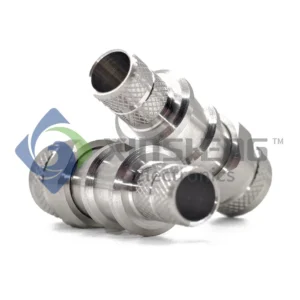
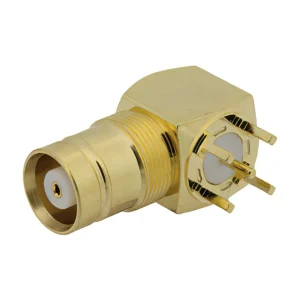
Industry Insights and Real-World Use Cases
The widespread use of SMA connectors is evident across both established and emerging industries. For example:
- In aerospace, SMA connectors are found in onboard satellite modules and aircraft radar systems due to their high-frequency handling and resistance to vibration.
- In 5G infrastructure, SMA connectors are used to connect RF modules in base stations, where consistent signal performance is critical.
- In test laboratories, engineers rely on SMA for accurate signal measurement in spectrum analysis and signal synthesis.
Several companies have reported improved efficiency and reduced maintenance by standardizing on SMA connectors. Their reliable mechanical and electrical performance has made them a preferred choice even in automated manufacturing systems and IoT device networks.
Environmental Considerations and Rugged Designs
SMA connectors are increasingly being designed for harsh environmental conditions. Special versions are available with waterproof sealing, corrosion-resistant materials, and enhanced shielding. For outdoor or industrial environments:
- IP67 or IP68-rated SMA connectors offer water and dust protection.
- Gold-plated contacts resist corrosion and provide better conductivity.
- Stainless steel housings are used in defense and marine systems for extra durability.
This ruggedization ensures that SMA connectors can perform reliably even in extreme temperatures, heavy moisture, and physical stress.
Future Trends and Developments
SMA connectors continue to evolve with emerging technologies:
- Millimeter-Wave Support: With the growth of 5G and radar, new SMA variants support higher frequencies up to 40 GHz.
- Smaller Footprints: Miniaturized SMA connectors for densely packed PCBs
- Ruggedization: Enhanced durability for harsh environments
- Smart Connectors: Future SMA designs may include integrated sensors for diagnostics and maintenance
Troubleshooting Common Issues with SMA Connectors
Even though SMA connectors are reliable and robust, users may encounter issues that can affect system performance. Understanding these common problems and their solutions can help maintain the integrity of your RF systems.
Poor Signal Quality or Loss
A frequent issue is unexpected signal attenuation or loss, which may be due to:
Loose Connections: SMA connectors require proper torque tightening. Loose connections can lead to signal reflection and loss.
Dirty Contacts: Dust, dirt, or oxidation on the center pin or the mating surface can cause poor electrical contact.
Damaged Connectors: Bent pins or worn threads affect connectivity and signal integrity.
Solution: Regular inspection and cleaning with appropriate isopropyl alcohol wipes, and using a torque wrench to tighten connectors within specified limits.
Mechanical Wear and Damage
Repeated mating cycles can cause wear on the threads or contacts. This can result in:
Difficulty in mating or unmating connectors
Increased insertion loss or intermittent connection
Solution: Use connectors rated for high mating cycles and inspect frequently for mechanical wear. Replace damaged connectors promptly.
Impedance Mismatch
Using an SMA connector with improper impedance (e.g., 75 ohms instead of 50 ohms) can cause reflections and reduce signal quality.
Solution: Always ensure impedance compatibility in your system components. Use proper adapters if needed.
Cross-Threading and Connector Damage
Improper alignment during connection can cause cross-threading, damaging the connector threads permanently.
Solution: Align connectors carefully before threading. Never force connectors; if resistance is felt, stop and realign.
Environmental Effects
Exposure to moisture, dust, or temperature extremes can degrade performance over time, especially in outdoor or industrial settings.
Solution: Use weatherproof SMA connectors with appropriate IP ratings for outdoor use. Regularly inspect and maintain connectors in harsh environments.
Choosing the Right SMA Connector for Your Application
Selecting the appropriate SMA connector is crucial to ensure optimal system performance and longevity. Different applications have varying requirements, and understanding these factors can guide you to the best choice.
Frequency Range Requirements
The first consideration is the operating frequency of your RF system. Standard SMA connectors handle up to 18 GHz, which covers most wireless and test equipment applications. However, for cutting-edge uses like millimeter-wave 5G or radar systems, precision SMA connectors designed for frequencies up to 26.5 GHz or beyond are recommended. Using connectors beyond their rated frequency can cause signal degradation and reflections.
Impedance Matching
Most SMA connectors are 50-ohm impedance, ideal for telecommunications and RF systems. Some specialty SMA connectors are 75 ohms for video or broadcast uses. Choosing the wrong impedance can lead to poor signal integrity and increased VSWR (Voltage Standing Wave Ratio), reducing efficiency.
Mechanical Design and Mounting Style
SMA connectors come in various mechanical configurations:
Cable Mount: For attaching to coaxial cables; common in field equipment.
Bulkhead Mount: Designed to be fixed on panels or enclosures, suitable for rack systems.
Right-Angle Connectors: Ideal for tight spaces where straight connectors won’t fit.
Surface Mount and PCB Connectors: For embedded electronics and miniaturized designs.
Understanding the physical constraints of your setup will help you pick the right connector style.
Environmental Considerations
If the application involves exposure to harsh environments—outdoors, high humidity, temperature extremes—choose SMA connectors with weatherproofing, corrosion-resistant materials, and proper sealing (such as IP67 or IP68 ratings). These features protect against moisture ingress and physical damage.
Durability and Mating Cycles
Some systems require frequent connection and disconnection. For such cases, SMA connectors rated for high mating cycles (often gold-plated for durability) are best. In contrast, fixed or rarely accessed connectors can use standard versions.
Cost and Availability
Budget constraints can influence your choice. While precision or ruggedized SMA connectors cost more, they provide better performance and longer lifespan. For consumer or low-demand applications, standard SMA connectors may suffice. Also, check supplier availability and compatibility to ensure consistent sourcing.
Before purchasing SMA connectors, always review your system’s RF requirements, mechanical constraints, and environmental conditions. Consult datasheets, talk to manufacturers, and consider testing samples in your specific setup. This diligence will help you avoid costly issues and achieve reliable signal performance.
Final Advice
Before purchasing SMA connectors, always review your system’s RF requirements, mechanical constraints, and environmental conditions. Consult datasheets, talk to manufacturers, and consider testing samples in your specific setup. This diligence will help you avoid costly issues and achieve reliable signal performance.
Conclusion
SMA connectors have stood the test of time due to their versatility, reliability, and performance. As RF and microwave applications continue to expand, these connectors remain a top choice across industries. Whether you’re building a prototype, repairing equipment, or designing the next generation of communication devices, SMA connectors provide a proven, efficient solution.
At Xinsheng Electronics, we offer a wide selection of SMA connectors, adapters, and cable assemblies to meet the needs of any RF project. Contact us today to learn more about our products and services.
Empowering precision in every connection.

